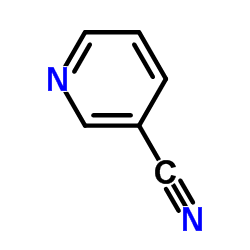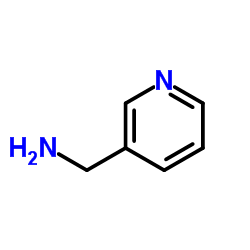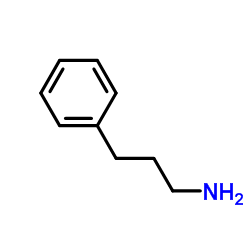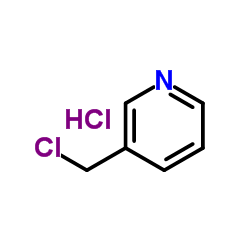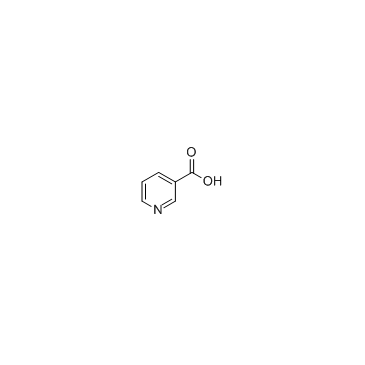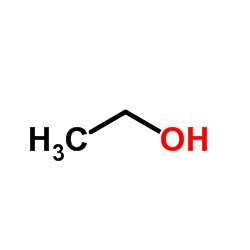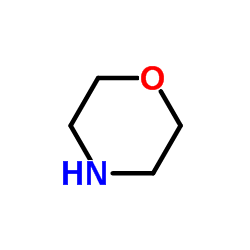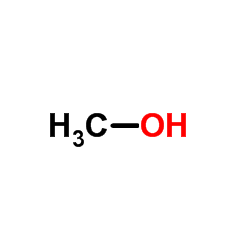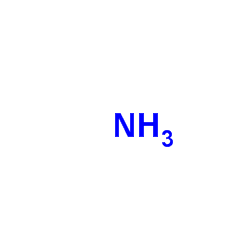3,3'-dipicolylamine

3,3'-dipicolylamine structure
|
Common Name | 3,3'-dipicolylamine | ||
|---|---|---|---|---|
| CAS Number | 1656-94-6 | Molecular Weight | 199.25200 | |
| Density | 1.118g/cm3 | Boiling Point | 356.2ºC at 760mmHg | |
| Molecular Formula | C12H13N3 | Melting Point | N/A | |
| MSDS | N/A | Flash Point | 169.2ºC | |
| Name | 1-pyridin-3-yl-N-(pyridin-3-ylmethyl)methanamine |
|---|---|
| Synonym | More Synonyms |
| Density | 1.118g/cm3 |
|---|---|
| Boiling Point | 356.2ºC at 760mmHg |
| Molecular Formula | C12H13N3 |
| Molecular Weight | 199.25200 |
| Flash Point | 169.2ºC |
| Exact Mass | 199.11100 |
| PSA | 37.81000 |
| LogP | 2.15730 |
| Vapour Pressure | 2.98E-05mmHg at 25°C |
| Index of Refraction | 1.589 |
|
Revision number: 5
Bis(3-pyridylmethyl)amine SAFETY DATA SHEET Section1. IDENTIFICATION Bis(3-pyridylmethyl)amine Product name: 5 Revision number: Section2. HAZARDS IDENTIFICATION GHS classification Not classified PHYSICAL HAZARDS HEALTH HAZARDS Category 2 Skin corrosion/irritation Category 2A Serious eye damage/eye irritation Not classified ENVIRONMENTAL HAZARDS GHS label elements, including precautionary statements Pictograms or hazard symbols Warning Signal word Causes skin irritation Hazard statements Causes serious eye irritation Precautionary statements: Wash hands thoroughly after handling. [Prevention] Wear protective gloves/eye protection/face protection. IF IN EYES: Rinse cautiously with water for several minutes. Remove contact lenses, [Response] if present and easy to do. Continue rinsing. If eye irritation persists: Get medical advice/attention. IF ON SKIN: Gently wash with plenty of soap and water. If skin irritation occurs: Get medical advice/attention. Take off contaminated clothing and wash before reuse. Section3. COMPOSITION/INFORMATION ON INGREDIENTS Substance Substance/mixture: Bis(3-pyridylmethyl)amine Components: >97.0%(GC) Percent: 1656-94-6 CAS Number: 3,3'-Dipicolylamine , α,α'-Iminodi(3-picoline) Synonyms: C12H13N3 Chemical Formula: Section4. FIRST AID MEASURES Remove victim to fresh air and keep at rest in a position comfortable for breathing. Inhalation: Get medical advice/attention if you feel unwell. Bis(3-pyridylmethyl)amine Section4. FIRST AID MEASURES Remove/Take off immediately all contaminated clothing. Gently wash with plenty of Skin contact: soap and water. If skin irritation or rash occurs: Get medical advice/attention. Rinse cautiously with water for several minutes. Remove contact lenses, if present Eye contact: and easy to do. Continue rinsing. If eye irritation persists: Get medical advice/attention. Get medical advice/attention if you feel unwell. Rinse mouth. Ingestion: A rescuer should wear personal protective equipment, such as rubber gloves and air- Protection of first-aiders: tight goggles. Section5. FIRE-FIGHTING MEASURES Dry chemical, foam, water spray, carbon dioxide. Suitable extinguishing media: Unsuitable extinguishing Solid streams of water media: Specific hazards arising Take care as it may decompose upon combustion or in high temperatures to generate poisonous fume. from the chemical: Precautions for firefighters: Fire-extinguishing work is done from the windward and the suitable fire-extinguishing method according to the surrounding situation is used. Uninvolved persons should evacuate to a safe place. In case of fire in the surroundings: Remove movable containers if safe to do so. When extinguishing fire, be sure to wear personal protective equipment. Special protective equipment for firefighters: Section6. ACCIDENTAL RELEASE MEASURES Use personal protective equipment. Keep people away from and upwind of spill/leak. Personal precautions, protective equipment and Ensure adequate ventilation. Entry to non-involved personnel should be controlled emergency procedures: around the leakage area by roping off, etc. Environmental precautions: Prevent product from entering drains. Methods and materials for Absorb spilled material in a suitable absorbent (e.g. rag, dry sand, earth, saw-dust). containment and cleaning In case of large amount of spillage, contain a spill by bunding. Adhered or collected up: material should be promptly disposed of, in accordance with appropriate laws and regulations. Section7. HANDLING AND STORAGE Precautions for safe handling Handling is performed in a well ventilated place. Wear suitable protective equipment. Technical measures: Prevent generation of vapour or mist. Wash hands and face thoroughly after handling. Use a ventilation, local exhaust if vapour or aerosol will be generated. Advice on safe handling: Avoid contact with skin, eyes and clothing. Conditions for safe storage, including any incompatibilities Keep container tightly closed. Store in a cool and dark place. Storage conditions: Store under inert gas. Store away from incompatible materials such as oxidizing agents. Air-sensitive Comply with laws. Packaging material: Section8. EXPOSURE CONTROLS / PERSONAL PROTECTION Install a closed system or local exhaust as possible so that workers should not be Engineering controls: exposed directly. Also install safety shower and eye bath. Personal protective equipment Respiratory protection: Vapor respirator. Follow local and national regulations. Protective gloves. Hand protection: Safety glasses. A face-shield, if the situation requires. Eye protection: Skin and body protection: Protective clothing. Protective boots, if the situation requires. Bis(3-pyridylmethyl)amine Section9. PHYSICAL AND CHEMICAL PROPERTIES Liquid Physical state (20°C): Clear Form: Very pale yellow - Yellow Colour: No data available Odour: pH: No data available Melting point/freezing point:No data available No data available Boiling point/range: No data available Flash point: Flammability or explosive limits: No data available Lower: No data available Upper: 1.12 Relative density: Solubility(ies): No data available [Water] No data available [Other solvents] Section10. STABILITY AND REACTIVITY Stable under proper conditions. Chemical stability: Possibility of hazardous No special reactivity has been reported. reactions: Incompatible materials: Oxidizing agents Hazardous decomposition Carbon monoxide, Carbon dioxide, Nitrogen oxides (NOx) products: Section11. TOXICOLOGICAL INFORMATION ivn-mus LD50:250 mg/kg Acute Toxicity: Skin corrosion/irritation: No data available No data available Serious eye damage/irritation: No data available Germ cell mutagenicity: Carcinogenicity: No data available IARC = No data available NTP = No data available Reproductive toxicity: UT4397000 RTECS Number: Section12. ECOLOGICAL INFORMATION Ecotoxicity: No data available Fish: No data available Crustacea: No data available Algae: Persistence / degradability: No data available No data available Bioaccumulative potential(BCF): Mobility in soil No data available Log Pow: No data available Soil adsorption (Koc): No data available Henry's Law constant(PaM3/mol): Section13. DISPOSAL CONSIDERATIONS Recycle to process, if possible. Consult your local regional authorities. You may be able to burn in a chemical incinerator equipped with an afterburner and scrubber system. Observe all federal, state and local regulations when disposing of the substance. Bis(3-pyridylmethyl)amine Section14. TRANSPORT INFORMATION Does not correspond to the classification standard of the United Nations Hazards Class: Not listed UN-No: Section15. REGULATORY INFORMATION Safe management ordinance of dangerous chemical product (State Council announces on January 26, 2002 and revised on February 16,2011): Safe use and production, the storage of a dangerous chemical, transport, loading and unloading were prescribed. SECTION 16 - ADDITIONAL INFORMATION N/A |
CHEMICAL IDENTIFICATION
HEALTH HAZARD DATAACUTE TOXICITY DATA
|
| Hazard Codes | Xi: Irritant; |
|---|---|
| Risk Phrases | 20/21/22-36/37/38 |
| Safety Phrases | 26-36/37/39 |
| RTECS | UT4397000 |
| HS Code | 2933399090 |
|
~% 
3,3'-dipicolylamine CAS#:1656-94-6 |
| Literature: Journal of the American Chemical Society, , vol. 66, p. 1293 |
|
~12% 
3,3'-dipicolylamine CAS#:1656-94-6 |
| Literature: Organic Letters, , vol. 11, # 4 p. 883 - 886 |
|
~% 
3,3'-dipicolylamine CAS#:1656-94-6 |
| Literature: Tetrahedron Letters, , vol. 45, # 2 p. 397 - 399 |
|
~% 
3,3'-dipicolylamine CAS#:1656-94-6 |
| Literature: Journal of the American Chemical Society, , vol. 66, p. 1293 |
|
~% 
3,3'-dipicolylamine CAS#:1656-94-6 |
| Literature: Journal of the American Chemical Society, , vol. 66, p. 1293 |
|
~% 
3,3'-dipicolylamine CAS#:1656-94-6 |
| Literature: Journal of the American Chemical Society, , vol. 66, p. 1293 |
|
~8% 
3,3'-dipicolylamine CAS#:1656-94-6
Detail
|
| Literature: Green Chemistry, , vol. 13, # 11 p. 3096 - 3100 |
|
~% 
3,3'-dipicolylamine CAS#:1656-94-6 |
| Literature: Journal of the American Chemical Society, , vol. 66, p. 876,877 |
| HS Code | 2933399090 |
|---|---|
| Summary | 2933399090. other compounds containing an unfused pyridine ring (whether or not hydrogenated) in the structure. VAT:17.0%. Tax rebate rate:13.0%. . MFN tariff:6.5%. General tariff:20.0% |
| Bis(3-pyridylmethyl)amine |
| 3,3'-Dipicolylamine |
| α,α'-Iminodi(3-picoline) |
| EINECS 216-753-5 |
| Bis-pyridin-3-ylmethyl-amine |
